
The history of Tembe Elephant Park in South Africa is a slightly unusual one. It was founded as a safe place for refugees from the Mozambique Civil War, which ran from 1977 to 1992. But it wasn’t founded to serve as a refuge for human refugees, but animal ones, specifically elephants. Elephants used to cross the border here before the war, but the fighting increased incidents of poaching as law and order broke down, leading to highly traumatised elephants crossing the border. The park was created as much to protect the local communities from marauding elephants with a hatred of dangerous humans and a lack of interest in the differences between nations as it was to protect the elephants. So dangerous were the elephants here that the park wasn’t opened up to tourism for years after its formation, and to this day it holds some of the wilder elephants I have ever seen. And elephants are always overwhelming anyway.
The park is somewhat out of the way, and doesn’t get a huge number of tourists. It is a good place for South African birders, as several species are found here and nowhere else in South Africa, and it holds a small number of endemics that it shares with the Mozambique lowlands. I wasn’t there to birdwatch, however, I was volunteering with Wildlife ACT, a conservation organisation that provides science monitoring to the parks of Zululand in South Africa (and increasingly, beyond).
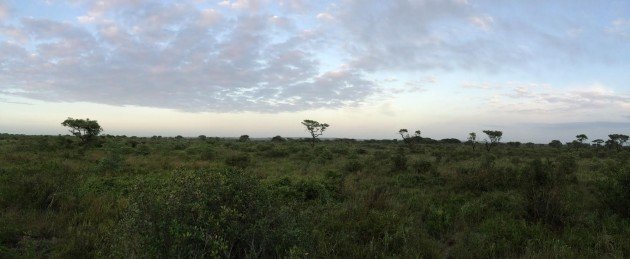 Tembe Elephant Park is a mosaic of savannah and forest
Tembe Elephant Park is a mosaic of savannah and forest
The focus of the monitoring at Tembe was twofold. In the mornings, and I use that term loosely, we would set out to monitor the Lions. Lions were re-introduced to the park a few years ago and have done so well the park now serves as a source of Lions for translocations. The first Lions to be re-introduced to Rwanda a few days ago were sourced from Tembe. The Lions here were odd in that they didn’t form prides, but instead lived individually or in pairs; this may be something to do with the abundance of prey. They have done so well that they have altered the ecology of the area; hyena are rarely seen any more, and Nyala have actually increased, which has actually worried scientists concerned about the effects Nyala have on the rare Sand Forest ecosystem found in the park. Even conservation success can lead to conservation problems.
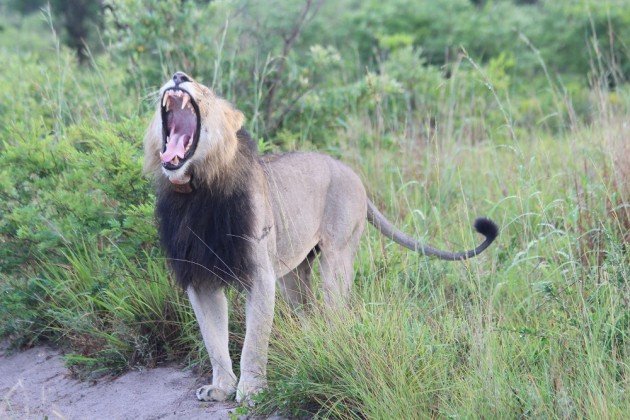 This male Lion circled our open vehicle alarmingly closely
This male Lion circled our open vehicle alarmingly closely
The other monitoring thrust was on the elephants themselves. This was conducted across the middle of the day, which, from the back of of a truck was quite demanding, be it the blistering African sun or the torrential downpours. It was pretty awesome to see so many tuskers, as well as families of elephants safe in their special park.
The park did have a pack of African Wild Dogs, or Painted Wolves, the species I had gone to Africa to see. They were not a major focus of monitoring as they often spent quite a lot of time in areas not served by roads. But twice during my two week stay we did see the pack, and it was my first ever encounter with the species. They had been the species I’ve most wanted to see, above any bird or fish or mammal, for many years, and they didn’t remotely disappoint. I’ll be writing more about them soon, when I can find the words.
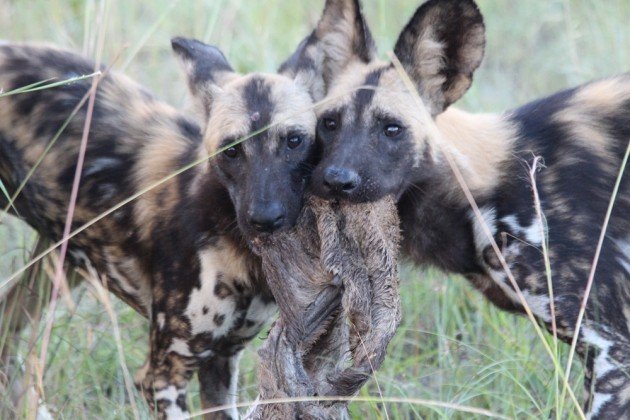 A pair of last year’s puppies playing with an old skin
A pair of last year’s puppies playing with an old skin
The days were demanding. I alluded to the fact that we barely started in the morning, and that’s because I don’t consider a 3AM start “morning”. From then we would search for Lions till 8 or so, before returning for breakfast, and then we’d search for elephants from 10 till 2. The rutty and sandy tracks were murder on the back (or at least mine, guess I am old now). But the wildlife and scenery was epic.
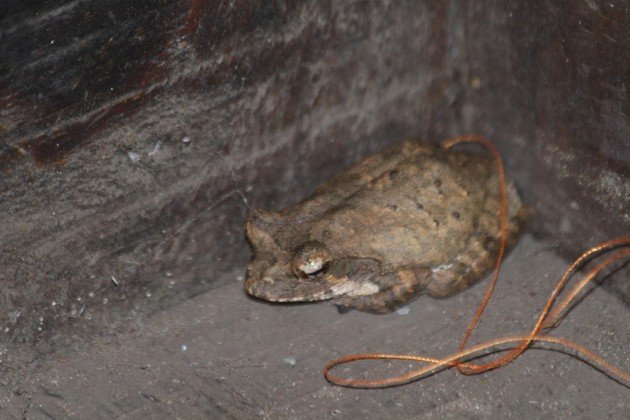 A Foam-nest frog, which makes a nest in, you guessed it, foam!
A Foam-nest frog, which makes a nest in, you guessed it, foam!
It wasn’t massively easy to bird this park, at least not as a volunteer. The priority when out in the park was monitoring, not sightseeing (Zululand, not Disneyland, as Wildlife ACT’s very unofficial logo had it) and in the spare time you weren’t trying to catch up on some rest we were very restricted on where we could go. The superabundance of lions and elephants in the park meant that straying on foot beyond the confines of our fenced enclosure was foolhardy, dangerous and forbidden.
But despite this, I did see birds. And how! A simple birdbath next to the outdoor table on which we ate attracted Grey Sunbirds, Yellow-bellied Bulbuls and Terrestrial Brownbuls. Nesting inside our compound were the shy Grey Waxbill and the not remotely shy Purple-naped Sunbird. A loud and gorgeous family of Retz’s Helmetshrikes passed through one morning when the prospect of going out in the truck was too much. Out in the park treats like Black-breasted Snake-eagles, Lemon-breasted Canaries, African Cuckoo-hawks, Pink Twinspots, Southern Black Tits, Martial Eagles and Black-bellied Bustards were a small selection of the treats I saw.
Tembe is a wild and remote place, and I feel privileged to have spent a few short days examining what it had to offer.

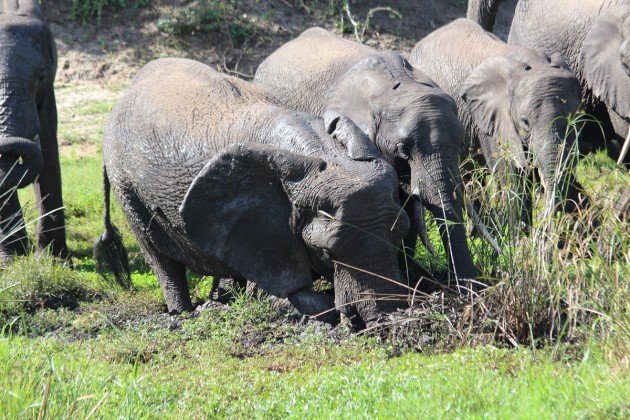
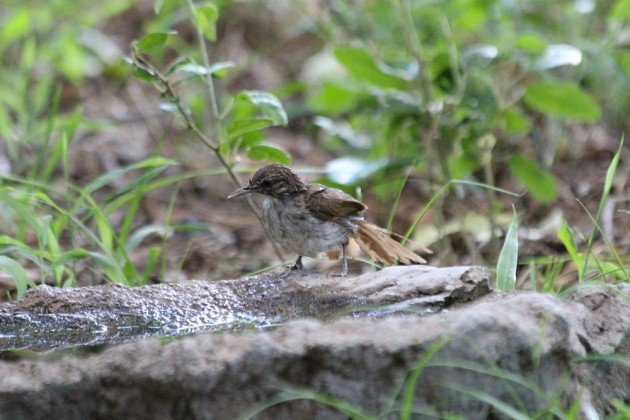
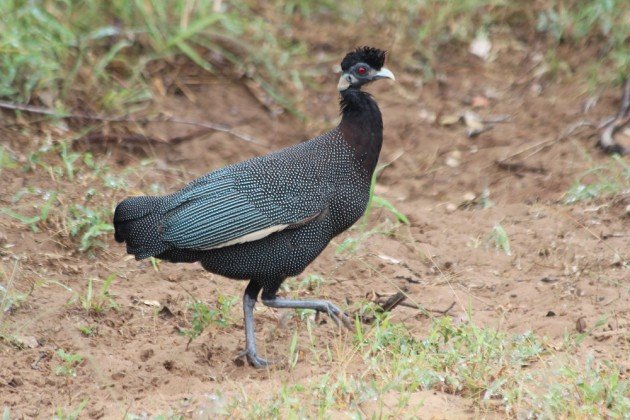
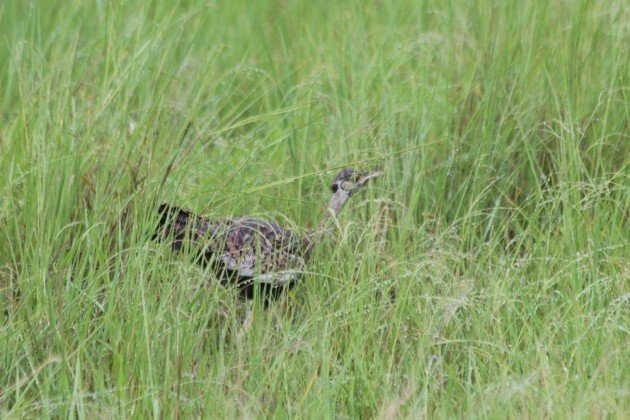










Great photos! Thanks for your post!